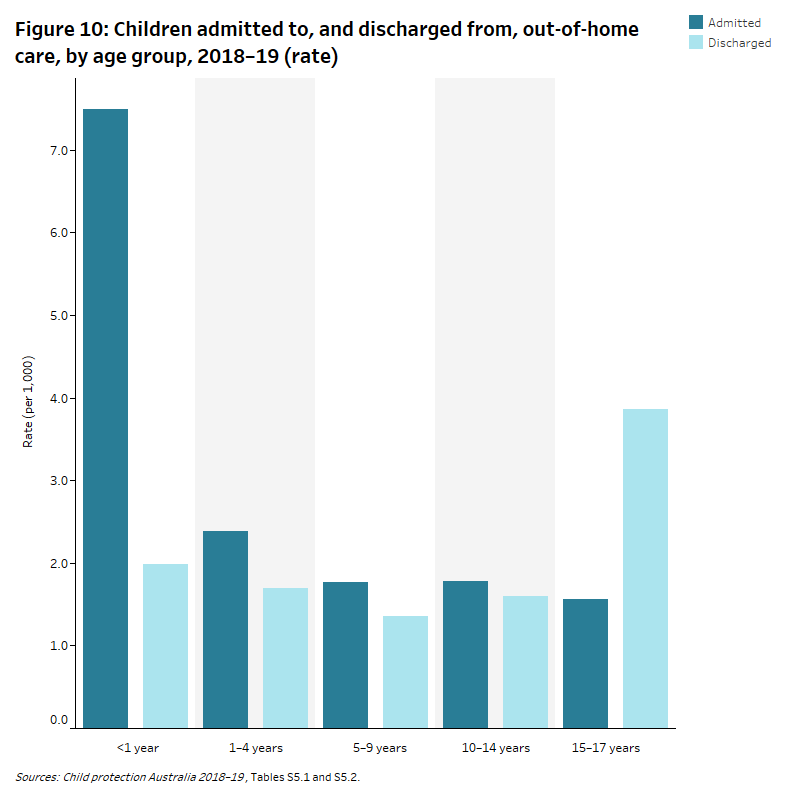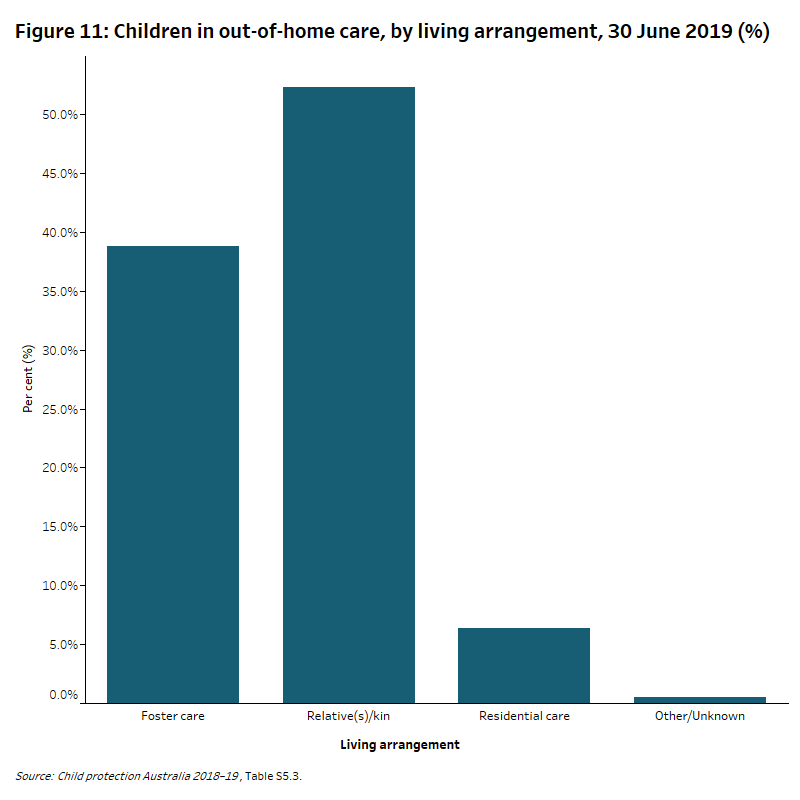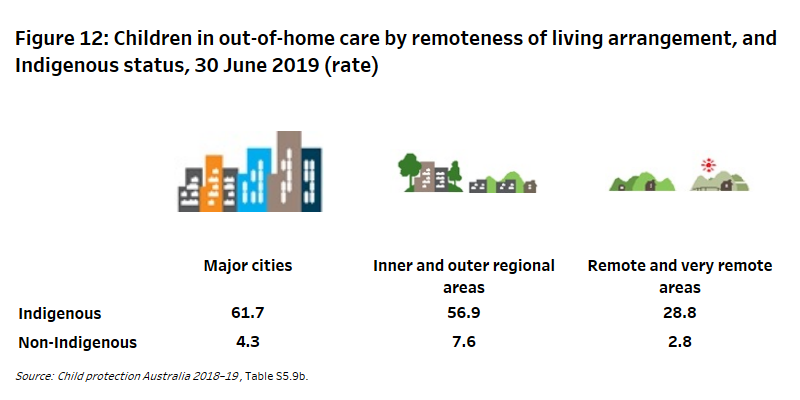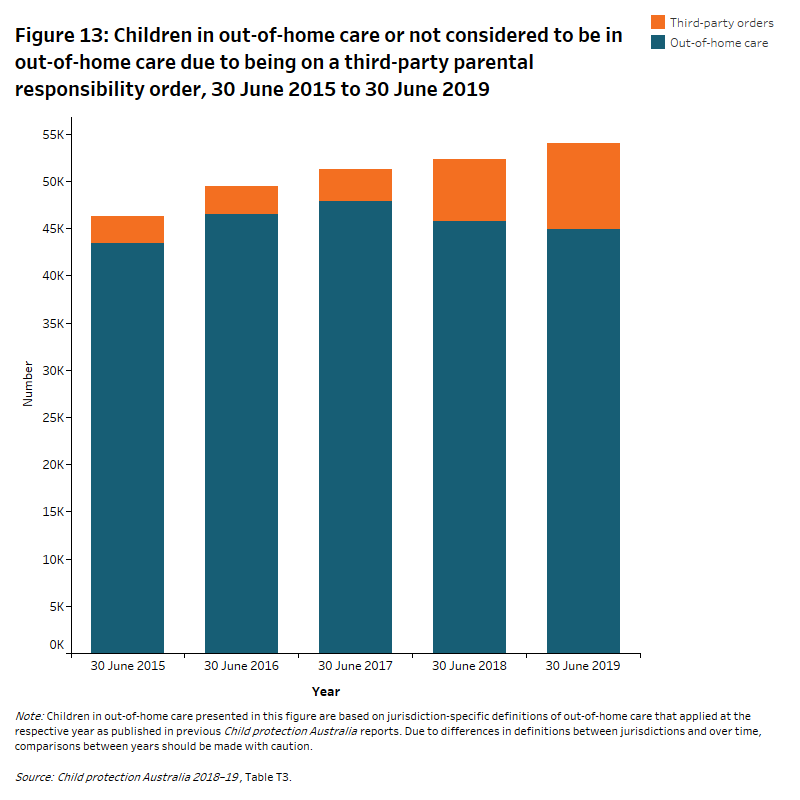Children in out-of-home care
Box 1: National definition of out-of-home care
A nationally consistent definition for out-of-home care has been implemented in 2018-19. Data based on this definition may not match state and territory figures published elsewhere and should not be compared with data published in previous versions of Child protection Australia. For more information, see Child protection Australia 2018–19 Chapter 5.
Children admitted to, and discharged from, out-of-home care
During 2018–19, 12,200 children were admitted to out-of-home care.
The rates of admission were higher for younger children and fell as age increased—7 per 1,000 for infants (children aged less than 1), and 2 per 1,000 for children aged 15–17 (Figure 10).
In comparison, rates of discharges from out-of-home care were highest for children aged 15–17 at 4 per 1,000. The rates for children discharged from out-of-home care across other age groups were similar.
The different age distribution for admissions and discharges reflects children being admitted to out-of-home care at a younger age and remaining there for longer, as well as children leaving out-of-home care once they turn 18.

At 30 June 2019, around 44,900 or 8 per 1,000 children aged 0–17 were in out-of-home care. Of these children, 52% were in relative/kinship care, 39% were in foster care, and 6% were in residential care (Figure 11).

Long-term out-of-home care
A child is considered to be in long–term out-of-home care if they have been in their placement continuously for a period of more than 2 years. Of the children who were in care at 30 June 2019, the majority had been in care for 2 years or more (67% or 30,300). This was similar for Indigenous and non-Indigenous children.
Reunification and permanent care
Permanency in the context of child protection can vary depending on child and family circumstances. However, the main aim of permanency is to maintain or establish meaningful connections with other caring adults in the child's life such as family, friends, and the community. Once a child is placed in out-of-home care, efforts are focused on reuniting the child with their family if appropriate (reunification), and/or maintaining the stability of their placement (permanency).
In 2018–19, there were about 14,600 children in out-of-home care, excluding those on long-term guardianship or custody orders, for whom reunification was a possibility. Of these children, over 3,700 (25%) were reunified with their family.
Remoteness area
Over half (54%) of children in out-of-home care at 30 June 2019 were living in Major cities and two-fifths (42%) lived in Inner and Outer regional areas.
The rates for children in Remote and Very remote areas were twice that of those in Major cities for children living in out-of-home care.
The rates of Indigenous children in out-of-home care were much higher across all remoteness areas than the rates for non-Indigenous children (see Figure 12).

Trends in the number of children in out-of-home care
This is the first year that a single nationally consistent definition of out-of-home care has been applied across all states and territories.
Differences in definitions between jurisdictions in previous years mean that the trend data presented in this chapter must be interpreted with caution.
For further information, refer to Child protection Australia 2018–19 Chapter 5.
Between 30 June 2015 and 30 June 2017, the number of children in out-of-home care rose by 10% (from 43,400 to 47,900) before falling by 5% to 45,800 in 2018 and then by 2% to 44,900 in 2019 (Figure 13).
The number of children not considered to be in out-of-home care due to being on third-party parental responsibility orders has risen from about 2,900 at 30 June 2015 to almost 9,200 at 30 June 2019 (Figure 13). This increase over time is a reflection of all states and territories gradually adopting definitions of out-of-home care that excluded children on third-party parental responsibility orders.



